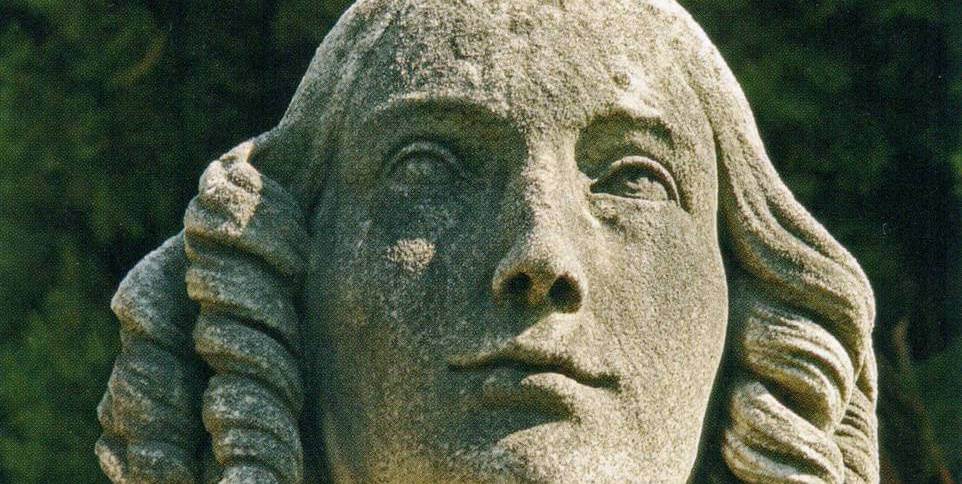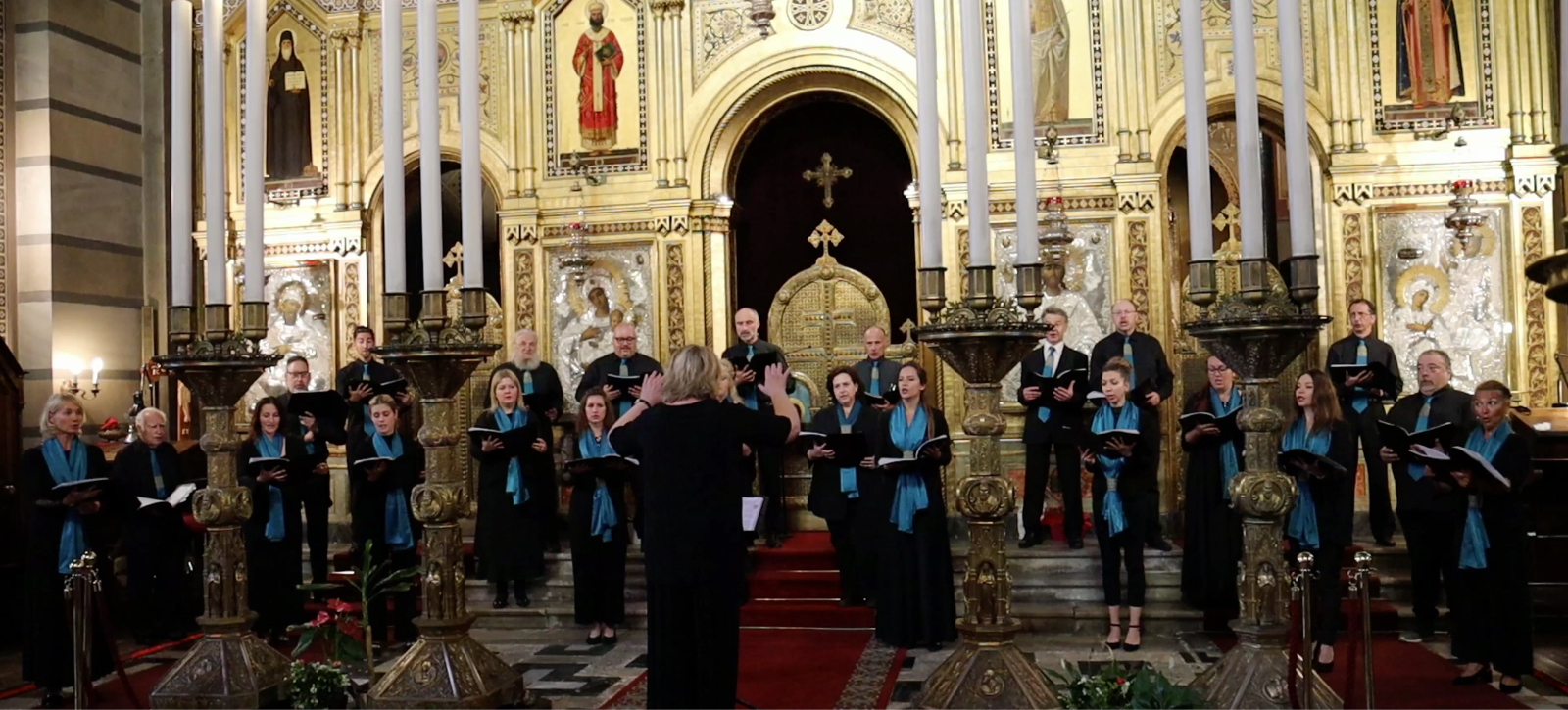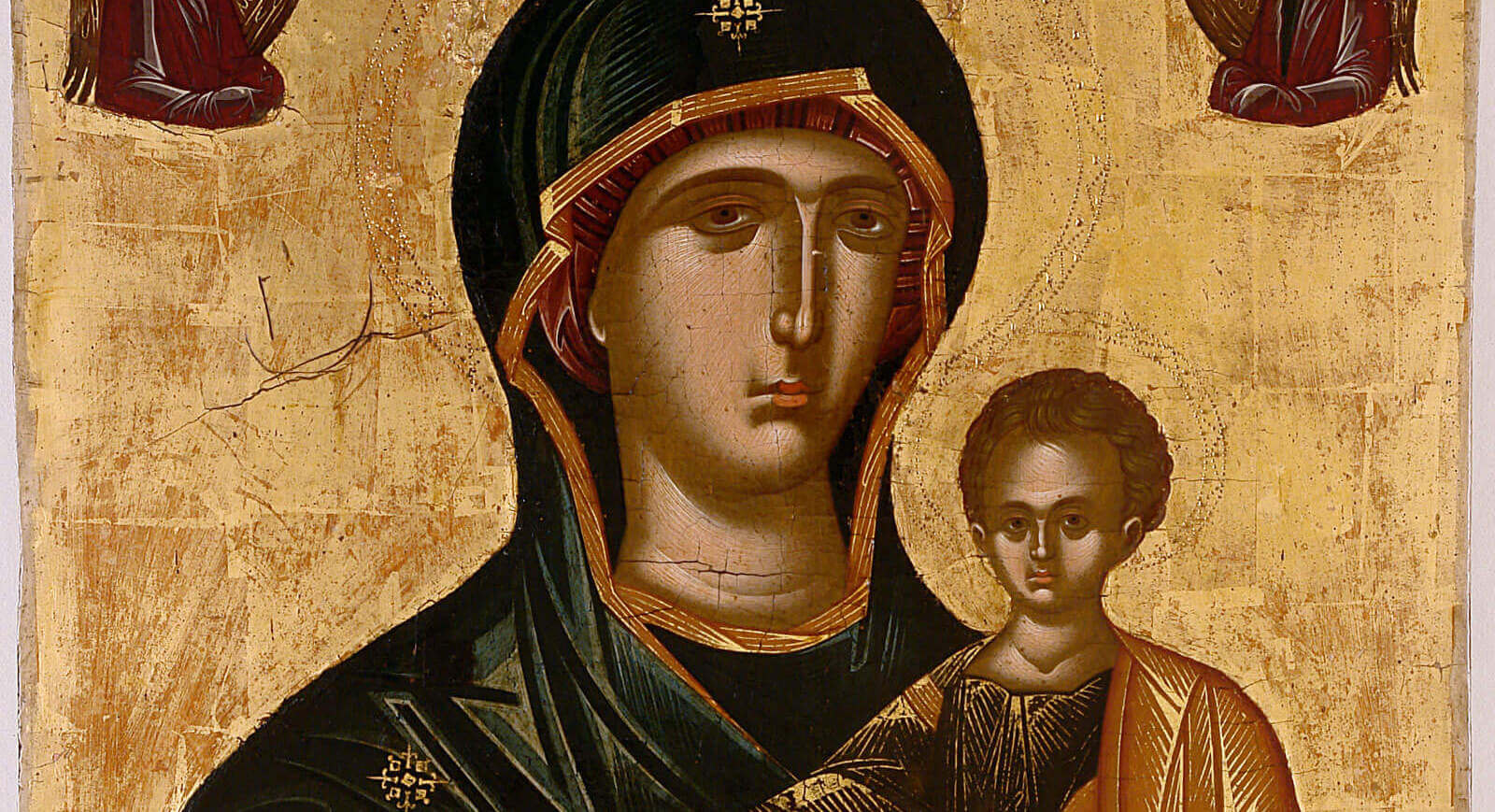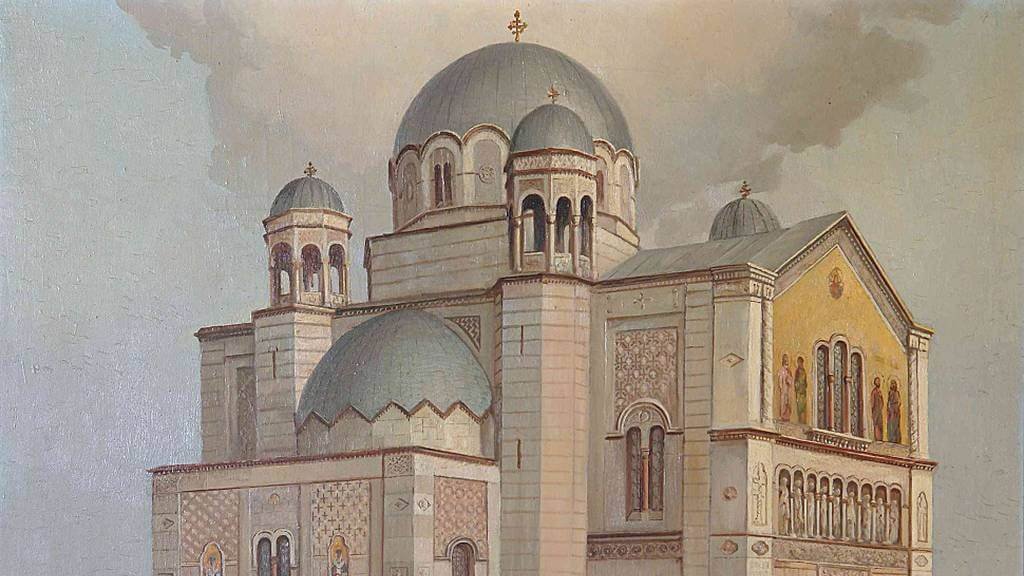In the early years of the Greco-Serbian community of Trieste the dead were buried in the old church of St. Spyridon, without any funeral pomp. It was only in the 1772 that Maria Theresa gave them permission to build a cemetery of their own. Thus, in 1785 the Serbs separated and built a new cemetery and chapel on terrain in Barriera Vecchia. A century later, owing to urban development of the town, the community built the present Serbian Orthodox cemetery with a chapel dedicated to St. George. The relics in the old graveyard in the city were disinterred and moved here.
The chapel is a small, single-nave building with a harmoniously proportioned portico surmounted by a small, open bell-tower. Left of the entrance, incorporated in the façade, is a tombstone erected by Sava Damaskin ot Nemet “to the spirit of his lovely wife Ekaterina, née Teodorović, who in her twenty-fourth year, after five years of honorable marriage, leaving two beloved daughters” died on October 13, 1930. In the paving left of the entrance is a stone tablet stating that here lies the widow Ana Georgijeva Teodorović, née Palikuća, who died on July 26, 1833. To the right of the entrance to the chapel is a tablet raised in memory of Anastasija Riznić who died on December 27, 1829.
Around the chapel the descendants of prominent Trieste families were buried in the new cemetery, and their tombs, ornate and costly, attest to their financial power and prestige. Some of these tombs are decorated with marble reliefs, while a few have busts of the deceased. The figural representations, even tombstones, are mostly in the prevailing classist style; stelae decorated with bas-reliefs are favourites. The themes were usually of classical inspiration, expressing the sorrow of parting and grief for the deceased, Thus, the classicist tomb of journalist and physician Dr. Dimitrije Frušić is decorated with a relief depicting grieving women bending towards an urn containing the ashes of the deceased. A relief with two youths near an urn adorns the tomb of Lazar Bajović, and there is also the ancient classical motif of the sleeping lion. The distinguishing feature of the tomb of Anastasija Cvetković, who died on January 1, 1854 is its monumentality. This great tomb, erected by her husband Hristofor Popović, contains bust of members of the Popović family. The sculptural decoration of the tomb, remarkable for its workmanship, is the work of the local stonecutting workshop of Antonio Bosa.
Along the eastern wall of the cemetery are the sumptuous tombs of the Haggiconsta, Captain Andrija Raičević and Stevan Ivanković. The spirit of historicism prevails in the design of these tombs, of which the most outstanding is that of Stevan Ivanković, with a seated figure of a woman, the work of Croatian sculptor Ivan Rendić from 1883/85. At the time Rendić was living in Trieste and had a studio there.
Today these ornate tombs, now overgrown with ivy, are in state of decay. The last members of these families died long ago. Only this chronicle in stone remains, a testimony to their achievements, great and small.












